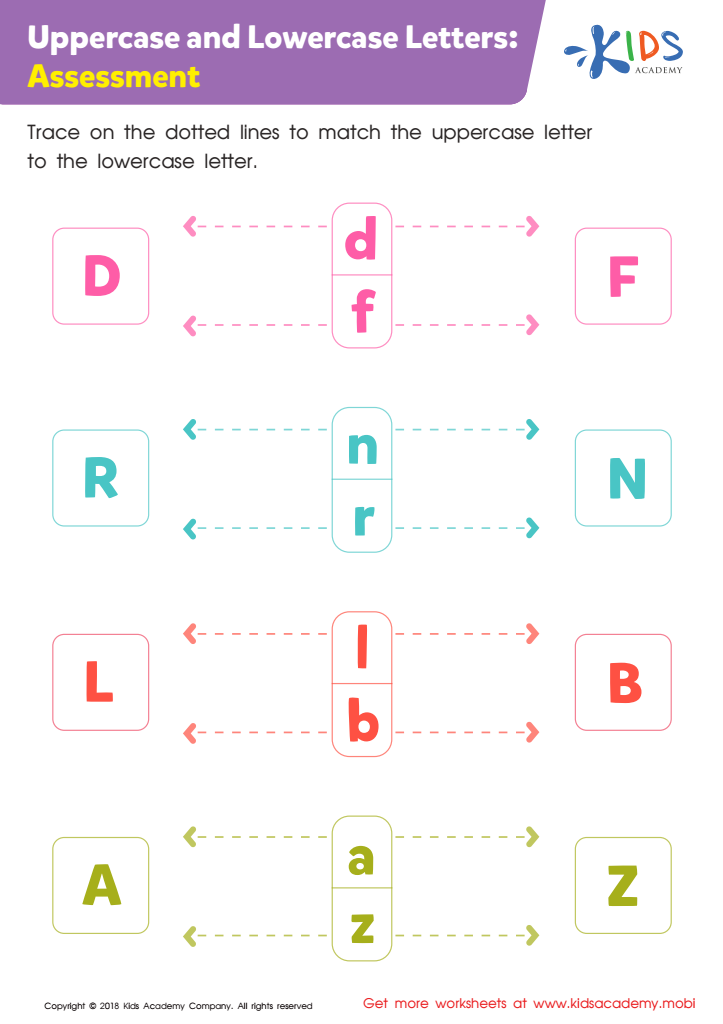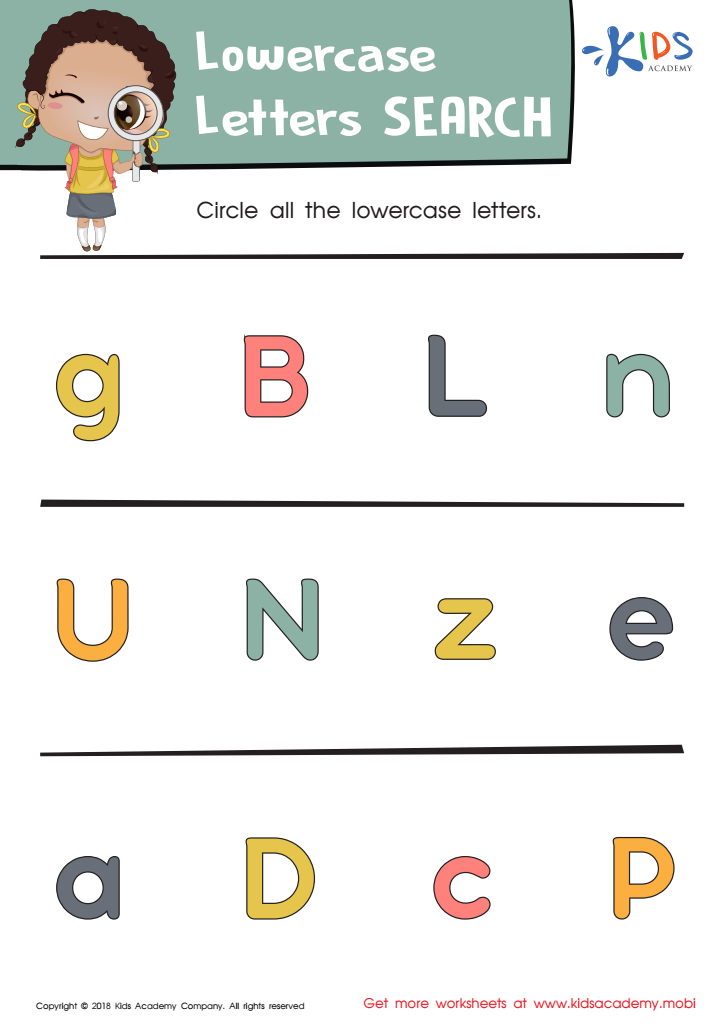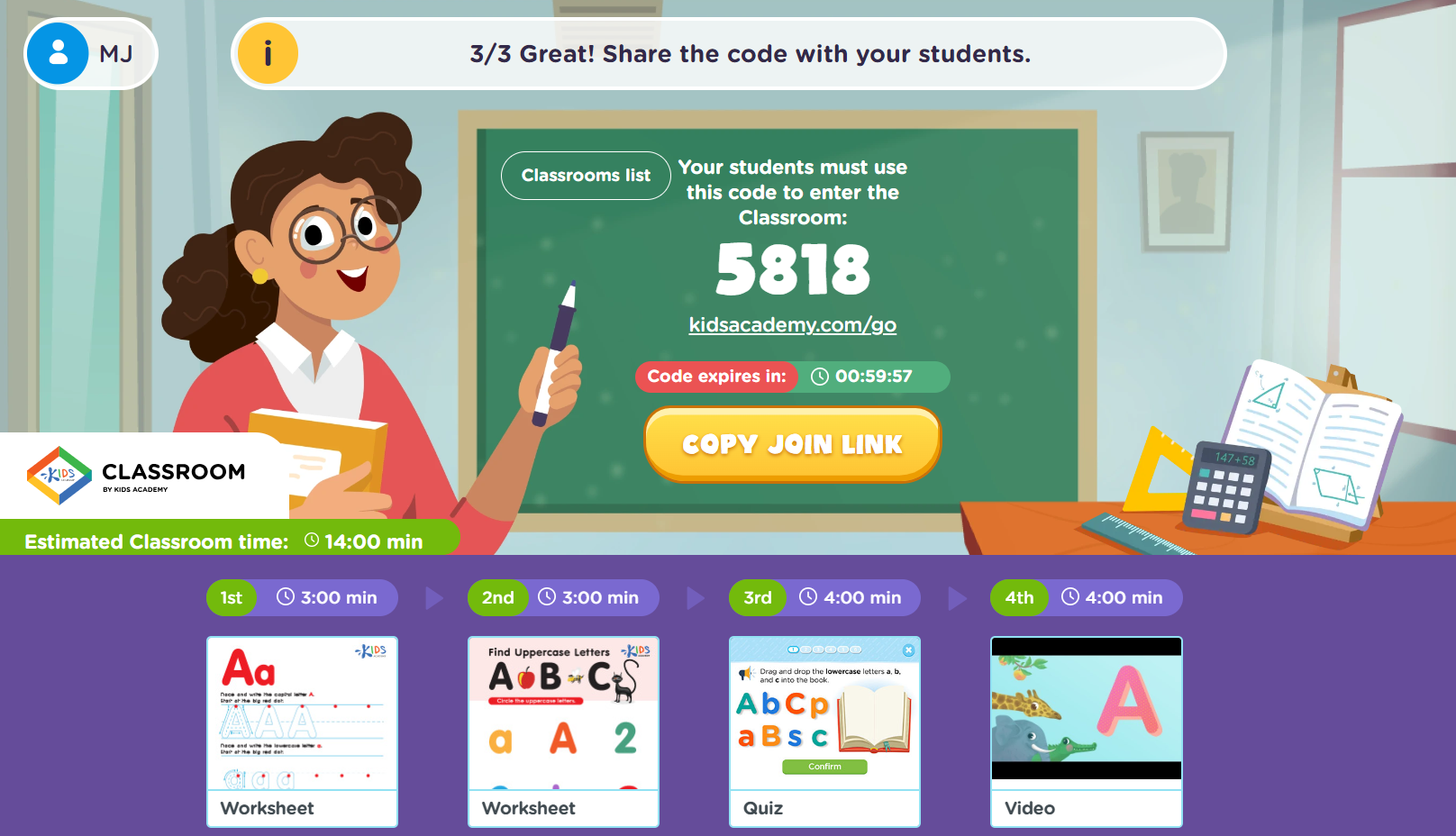Upper & Lowercase Letters worksheets activities for Ages 4-5
2 filtered results
-
From - To


Uppercase and Lowercase Letters: Assessment Worksheet


Lowercase Letters Search: Assessment Worksheet
Upper & Lowercase Letters worksheets activities are an essential component of early literacy education. They play a pivotal role in teaching young learners the fundamentals of the alphabet, which is the foundation of reading and writing. These activities are meticulously designed to enhance children's understanding and recognition of each letter in both its uppercase and lowercase forms, which is crucial for their literacy development.
One of the primary reasons why Upper & Lowercase Letters worksheets activities are useful is that they foster letter recognition. Recognizing the difference between uppercase and lowercase letters is a skill that children need to master as they learn to read and write. These worksheets provide a variety of exercises, from matching games to letter tracing, which help children familiarize themselves with the shapes and sounds of each letter, thus boosting their recognition skills.
Furthermore, these activities support fine motor skills development. As children trace, write, or color letters on the worksheets, they are also honing their fine motor skills. This improvement in hand-eye coordination and pencil control is crucial for their ability to write letters and words as they progress through their education.
Moreover, Upper & Lowercase Letters worksheets activities are designed to be engaging and fun for young learners. They often incorporate colorful illustrations, themes, and characters that children love, making the learning process enjoyable rather than a chore. This enjoyment not only keeps children engaged but also fosters a positive attitude towards learning.
In addition, these worksheets offer a structured learning path. They gradually increase in difficulty, starting with simple recognition and moving towards more complex writing exercises. This structured approach ensures that children build their skills progressively, without feeling overwhelmed.
In conclusion, Upper & Lowercase Letters worksheets activities are a crucial tool in early literacy education. They not only help children recognize and differentiate between uppercase and lowercase letters but also support the development of fine motor skills, engage learners in a fun way, and provide a structured approach to learning that lays the foundation for future reading and writing success.
 Assign to the classroom
Assign to the classroom












